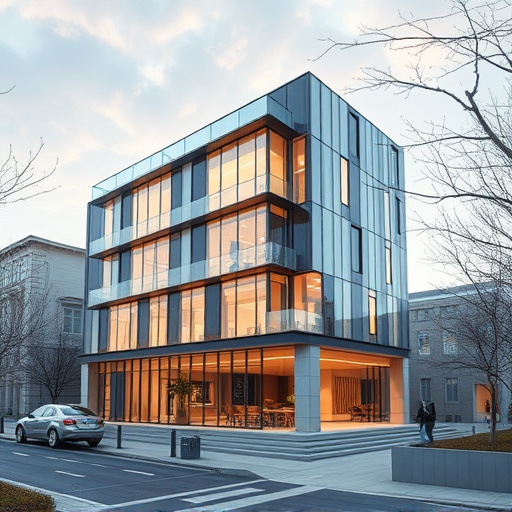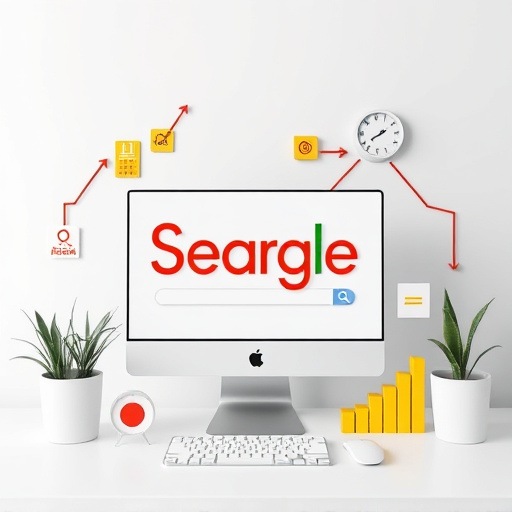Professional website design in today's digital era requires social media integration to enhance user engagement and local SEO. By strategically placing social media feeds, sharing buttons, and user-generated content on websites, designers improve online visibility for businesses, especially locals in Frisco seeking more traffic. This trend balances aesthetics and functionality, ensuring professional website designs stay relevant and meet user expectations across devices.
In today’s digital era, social media integration is no longer an option but a necessity for professional website design. As users increasingly interact with brands online, understanding and leveraging social media trends are crucial for enhancing user engagement and driving business growth. This article explores how to seamlessly incorporate social media into professional websites, delving into current trends, benefits, and best practices to ensure a robust online presence.
- Understanding Social Media Integration Trends in Web Design
- Enhancing User Engagement: Benefits for Professional Websites
- Best Practices and Strategies for Seamless Social Media Incorporation
Understanding Social Media Integration Trends in Web Design

In the dynamic landscape of professional website design, social media integration is no longer a trend but a necessity. Today’s users expect seamless interaction between their favorite platforms and the websites they visit, whether it’s sharing content on Instagram, commenting on LinkedIn, or following a brand on Twitter. This shift has prompted web designers in locations like Arlington, South Florida, and beyond to incorporate social media elements into their projects. For instance, integrating social media feeds, buttons for easy sharing, and user-generated content sections enhance user engagement and encourage visitors to connect with brands on familiar grounds.
Understanding these integration trends is crucial for businesses looking to optimize their online presence. Local SEO in Frisco, for example, can benefit from strategic placement of social media widgets, which not only boost engagement but also improve local visibility by showcasing a company’s active online community. As the digital world continues to evolve, staying abreast of these trends ensures that professional website design remains relevant, engaging, and aligned with user expectations.
Enhancing User Engagement: Benefits for Professional Websites

Incorporating social media integration into professional website design significantly enhances user engagement, providing a multitude of benefits for businesses in today’s digital landscape. By seamlessly connecting their online presence to popular social platforms like LinkedIn, Facebook, and Twitter, companies can foster a sense of community and encourage interactive participation from their target audience. This strategy allows for real-time communication, enabling professionals to share valuable insights, industry news, and client testimonials, thereby driving more traffic to the website.
For instance, a well-designed web design Arlington approach that incorporates social media widgets or feeds can display recent posts or updates from the company’s social profiles directly on the website. This not only keeps visitors engaged but also improves SEO services Dallas efforts by increasing the site’s visibility and organic reach. Mobile-friendly website designs further enhance this experience, ensuring that users across various devices can effortlessly interact with social media content, ultimately leading to a more dynamic and successful online presence for professionals in any field.
Best Practices and Strategies for Seamless Social Media Incorporation

Incorporating social media seamlessly into a professional website design requires careful planning and adherence to best practices. A key strategy is to integrate social media feeds, buttons, and widgets in visually appealing yet non-disruptive ways. This can involve showcasing recent activity from platforms like LinkedIn, Twitter, or Instagram directly on the site, ensuring users can engage with content without leaving the page. For a mobile-friendly website design, these elements should be responsive, adapting gracefully to various screen sizes and orientations.
Additionally, aligning social media integration with local SEO Fort Lauderdale strategies is essential. Including share buttons and customizable content options encourages user engagement and sharing, boosting local visibility through organic reach. A balanced approach that considers both aesthetic appeal and functionality ensures the professional website design remains effective in attracting and retaining visitors, ultimately enhancing its impact in a competitive online environment.
Social media integration has evolved from a trend to an indispensable element of modern professional website design. By seamlessly incorporating social feeds, sharing buttons, and engagement tools, businesses can significantly enhance user experience and boost online presence. Following best practices outlined in this article—such as aligning social media strategies with brand identity, ensuring mobile responsiveness, and providing clear call-to-actions—will facilitate successful integration, fostering greater interaction and ultimately contributing to the overall success of professional websites in today’s digital landscape.














